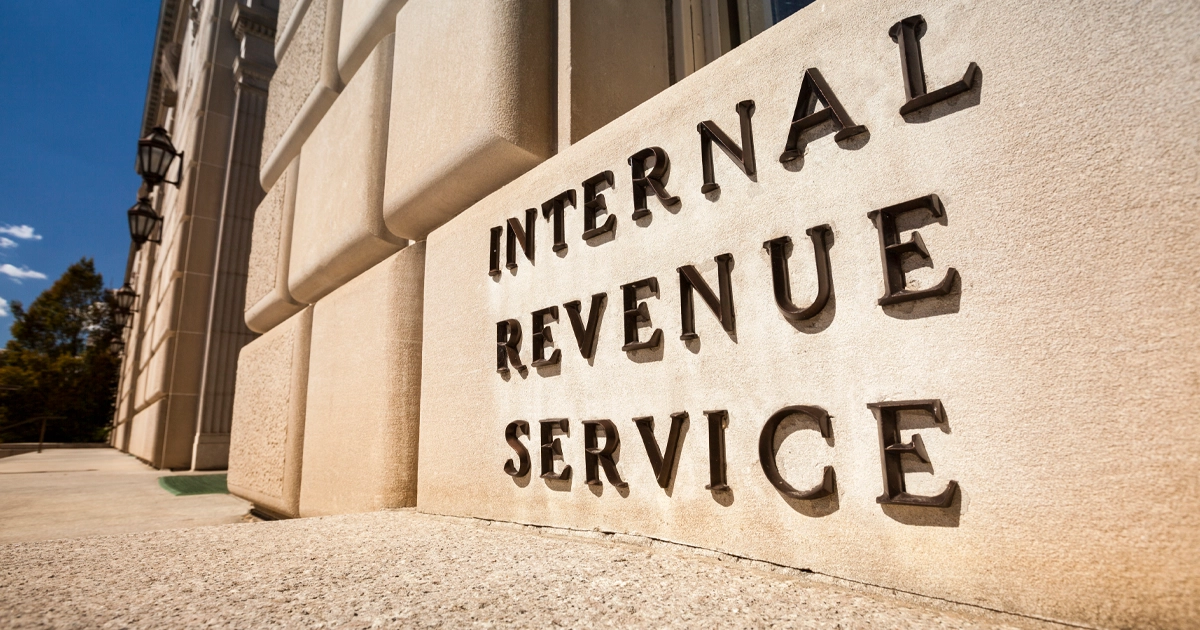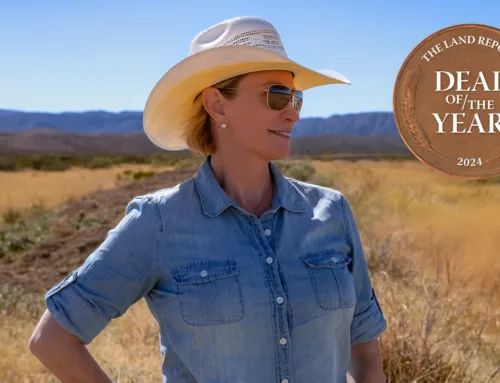IRS Cracks Down on Syndicated Conservation Easements
IRS Cracks Down on Syndicated Conservation Easements
By Bill Briggs

LR_IRS-01
CASE CLOSED. After decades of misuse, the IRS and Congress put an end to an abusive tax shelter — for now.
Syndicated conservation easements have been labeled as one of the worst tax scams ever created — but you’d never know it by looking at the Preserve at Little Pine. Set on a panoramic perch near Asheville, North Carolina, it spills across 1,800 acres of forest, pastures, and ponds, offering homeowners “a mountaintop wonder,” according to its website. Close by, a sister community called French Broad Crossing boasts access to a river lodge, a wellness center, and hiking trails. French Broad Crossing spans more than 750 acres, providing homeowners a “pristine mountain escape,” according to sales materials.
Jack Fisher, the accountant who bought and marketed those acres, has described them as places “where conservation is a way of life.” Born in Western North Carolina, Fisher vowed to “protect this one-of-a-kind setting.” And he ultimately placed those lands under a designation that sounds protective on its face: a syndicated conservation easement.
Illegal Tax Shelters
But since 2016, the IRS has branded syndicated conservation easements as one of “the worst tax scams.” In 2022, a federal law banned the practice. And that same year, a federal grand jury indicted Fisher — along with six co-defendants — for selling syndicated conservation easements, which federal officials now call “illegal tax shelters.”
The Fisher prosecution — the first criminal trial involving syndicated conservation easements — marked a watershed moment in a protracted federal fight to kill off a lucrative tax scheme. Since 2010, fraudulent tax deductions taken through syndicated conservation easements have cheated the US Treasury out of $36 billion, according to the IRS. At the same time, the practice has had a chilling effect on legitimate conservation efforts, watchdogs say.
“I’ve never seen anything like it in my life,” says Lori Faeth, senior government relations director at the Land Trust Alliance, a nature-conservation organization based in Washington, D.C., that helped spearhead the crackdown on syndicated conservation easements. “It’s egregious abuse. It’s a black eye for the land-conservation community. As it grew, it generated billions of dollars that went into the pockets of people engaged in this abuse — all as our community fights for every dollar that can go toward conservation.”
Conspiracy to Defraud the United States
In January, Fisher, 71, was sentenced to 25 years in prison after a federal jury convicted the syndicated conservation easement promoter of conspiracy to defraud the United States, money laundering, and associated tax crimes. Court documents say Fisher and his co-conspirators sold investors nearly $1.4 billion in fraudulent charitable deductions through their syndicated conservation easement practices, bilking the IRS out of more than $450 million. Fisher used the proceeds to buy a private jet, homes, and a Caribbean getaway on Bonaire — all while promoting a tax dodge that became a financial juggernaut. “It’s just a small set of bad actors that are abusing the tax code,” Faeth says. “The vast, vast majority of landowners and land trusts are doing [conservation easements] for all the right reasons — reasons why that tax incentive was put into place.”
The sale and marketing of syndicated conservation easements has flourished for decades in a sea of linguistic confusion which muddied and slowed Congressional oversight efforts, watchdogs say. Syndicated conservation easement promoters and their lobbyists in Washington adopted the same language and talking points long used by traditional conservationists. For example, a pro-syndicated conservation easement trade group called Partnership for Conservation has said it encouraged “private donations to permanently protect valuable and environmentally sensitive green space for future generations.”
“They sounded like us,” Faeth says. But the two types of easements are starkly different.
Protecting Land with a Conservation Easement
Traditional conservation easements, used since the 1960s, are considered one of the most powerful innovations to emerge in land preservation. They’ve been implemented in all 50 states and protect approximately 40 million acres of privately held land. Some cover less than 10 acres of farmland. Others cover tens of thousands of acres of forests or ranches. In short, a traditional conservation easement is a voluntary legal agreement between a landowner and a government agency or qualified conservation organization — like a land trust — that permanently restricts future development of that land. It’s often used to protect habitat for birds, fish and other wildlife or to maintain land for recreation or aesthetic views. Landowners remain free to sell, donate, or bequeath those acres, but the easement remains attached to the property in perpetuity, ensuring it stays protected. In exchange for surrendering their development rights, landowners receive a charitable tax deduction that’s equal to the development value of their acres.
“If you’re talking about conserving private lands, these are the future of land conservation in America, protecting lands that provide us clean air, clean water, and wildlife habitat,” says Larry Selzer, president and CEO of The Conservation Fund, a national nonprofit land trust based in Arlington, Virginia. “But the emergence of these fraudulent syndicated easements threw all of that in jeopardy,” Selzer adds.
An Abusive Tax Shelter
A syndicated conservation easement is an “abusive tax shelter” that exploits the legal tax breaks long affixed to traditional conservation easements, according to the IRS. In such cases, a promoter buys land that’s low in value and typically idle, then places that land into an entity, such as a limited liability company (LLC). The promoter publicizes plans to conserve some of those acres and to develop the rest with new homes or a resort or other amenities. The promoter hires an appraiser who is willing to give the land an inflated value — far higher than the original purchase price — based on the development claims. Finally, the promoter sells stakes in the LLC to investors, promising them large conservation-easement deductions based on the artificially high land value.
In the Fisher case, the defendants bought ownership interests in 18 property companies that owned vacant land, court records show. In October 2018, for example, they paid approximately $12 million for an 80 percent ownership interest in Equity Investment Associates, a property company with land in coastal North Carolina. Fisher then created a syndicated conservation easement on that land. Less than six months later, that same easement was appraised at a value of $223 million, according to the indictment.
In total, Fisher and his co-defendants earned tens of millions of dollars while their investors took more than $1 billion in fraudulent tax deductions, according to a federal indictment. Beyond that case, the IRS has been auditing and seeking penalties from about 28,000 investors who collectively claimed $21 billion in syndicated conservation easement deductions from 2016 through 2018, ProPublica has reported.
Ripping Off Every Taxpayer
“Tax fraud is tax fraud,” Selzer says. “Stopping this isn’t just important for the American people — because these people were ripping off every taxpayer in America. It’s also important for maintaining the future of one of the most important conservation tools we have. These people have abused the trust the rest of us put in the integrity of conservation easements. The pursuit and conviction of these people was just and appropriate, and I hope it sends a message to all other people who would commit fraud that they should think twice.”
IRS penalties for people who took SCE deductions range from 20 percent to 40 percent, says Diana Norris, Conservation Defense Network and tax manager at the Land Trust Alliance. Thousands of SCE cases brought by the IRS have now created a glut in the tax courts. But as IRS investigators aggressively catch up to years of abuse, agency auditors are simultaneously scrutinizing “some very technical aspects of [traditional] conservation easement drafting — really remote situations that might ever happen,” Norris says. And that’s fueling uncertainty among land trusts and the people who legally donate their land to the trusts, Norris says.
“When you, as a landowner, are drafting a conservation easement, you want certainty that it’s going to protect the property. But you’re also asking for a tax incentive as you give up valuable interest in your property,” Norris says. “Knowing that the IRS could then disqualify the deduction because of a technical foot fault has really increased that level of risk. We’ve heard from some of our land trust members that donors were just not willing to take the risk at that point,” Norris adds. “That has a chilling effect on conservation.”
Stopping Future Frauds
But a bigger question remains: Will the IRS investigations and the new federal law put a stop to syndicated conservation easements for good? Some experts have optimism. They also have doubts.
At The Conservation Fund, Selzer expects the legislative and legal actions to have a dampening effect on promoters who attempt to peddle the scam. “On the other land, I’ve learned it’s never safe to overestimate the integrity of people who are intent on committing fraud,” Selzer says. “They’ll find a new way to try a new scheme, and the rest of us need to remain vigilant. We need to protect the integrity of the system.” His caution seems warranted.
At the offices of the Land Trust Alliance, reports have been trickling in from conservation professionals, land trust managers, and other organization members from around the country. And word is, some syndicators have still been “reaching out to people, still pursuing some of these transactions,” Faeth says.
“But,” she adds, “we are hopeful.”





